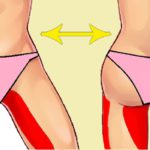Welcome to the world of the ketogenic diet, or as you’ll soon come to know it, the ultimate fat-burning lifestyle. If you’ve landed here, you’re probably wondering what the buzz is all about. Well, buckle up! This beginner’s guide will help you navigate the world of keto in a simple, digestable way.
Let’s dive right in and get started on your journey towards understanding and implementing the keto diet for beginners.
1. Understanding the Basics: What Is the Keto Diet?
The ketogenic diet, or ‘keto’ for short, is a low-carb, high-fat diet that has been linked to several health benefits, including weight loss and improved cognitive function. It’s all about getting your body into a state of ketosis, where it uses fat as its primary source of fuel instead of glucose (sugar).
But how does this work? Well, when you drastically reduce your carbohydrate intake, your body needs to look for another fuel source. In this state of carb scarcity, your liver begins to convert fat into ketones, molecules that can be used by your cells for energy.
In essence, you’re turning your body into a fat-burning machine.
2. Starting the Keto Diet: What to Eat and What to Avoid
Transitioning to a new diet can be daunting, especially when it involves rethinking many staple foods. To make things easier, we’ve compiled a quick and easy guide of what’s on the menu and what’s not when following the keto diet.
Foods to Eat
- Meat and Poultry: Chicken, beef, pork, and turkey are all fantastic sources of protein and have zero carbohydrates.
- Fish and Seafood: Fatty fish like salmon, mackerel, and sardines are rich in Omega-3 fats and are an excellent choice for keto.
- Eggs: They’re a high-protein breakfast staple that’s also high in healthy fats.
- Healthy Fats: Avocados, olive oil, and coconut oil are all excellent sources of healthy fats.
- Low-Carb Vegetables: Non-starchy vegetables like spinach, broccoli, and bell peppers can be consumed in abundance.
- Dairy: High-fat dairy products such as cheese, butter, and cream are keto-friendly.
Foods to Avoid
- Grains and Starches: This includes wheat products, rice, pasta, and cereals.
- Fruit: Most fruits are high in sugar and carbs, although berries can be enjoyed in small amounts.
- Sugary Foods: This includes sweets, sugary drinks, and desserts.
- Beans and Legumes: These are typically high in carbs.
- Alcohol: Many alcoholic beverages are high in carbs.
3. The Keto Flu: A Bump in the Road
When starting the keto diet, you might experience a group of symptoms known as the “keto flu”. This can include headaches, fatigue, and mood swings. But fear not, these symptoms are temporary and are simply your body’s way of adjusting to its new fuel source.
4. The Benefits Beyond Weight Loss
While many people embark on the keto journey for weight loss, there’s a host of other health benefits you may reap from this high-fat lifestyle. This includes potential improvements in heart health, brain function, and more.
5. Sticking to Keto: Tips and Tricks
Starting the keto diet is one thing, but sticking to it is another. Here are a few tips and tricks to keep you on track:
- Prep Your Meals: Meal prepping is a lifesaver. It helps keep you on track and resist the temptation to eat high-carb foods.
- Hydrate and Replenish Electrolytes: This is especially important during the initial stages when the body is getting used to a new way of eating.
- Track Your Macros: Understanding your macronutrient intake is key to a successful keto diet. There are many apps available to help you keep track of your carbs, protein, and fat.
- Listen to Your Body: Every body is different, and everyone’s experience with keto will be unique. It’s important to listen to your body and make changes as necessary.
6. Sample Keto Meal Plan for a Week
Starting any new diet can be a challenge, especially when it comes to meal planning. Here’s a simple 7-day ketogenic meal plan to get you started.
Day 1
- Breakfast: Scrambled eggs with spinach and feta cheese
- Lunch: Grilled chicken salad with olive oil dressing
- Dinner: Baked salmon with asparagus and a side of mashed cauliflower
Day 2
- Breakfast: Avocado and bacon omelet
- Lunch: Tuna salad with cucumber and celery
- Dinner: Ribeye steak with a side of sauteed mushrooms
Day 3
- Breakfast: Full-fat Greek yogurt topped with crushed pecans
- Lunch: Beef stir-fry with broccoli
- Dinner: Zucchini noodles with shrimp and Alfredo sauce
Day 4
- Breakfast: Keto-friendly smoothie made with spinach, unsweetened almond milk, and peanut butter
- Lunch: Chicken Caesar salad
- Dinner: Pork chops with a side of green beans sautéed in butter
Day 5
- Breakfast: Chia pudding made with unsweetened almond milk and a handful of berries
- Lunch: Egg salad served in lettuce wraps
- Dinner: Grilled cod with a side of Brussels sprouts
Day 6
- Breakfast: Omelet with cheese, bell peppers, and onions
- Lunch: Cobb salad with hard-boiled eggs, bacon, avocado, and blue cheese
- Dinner: Baked chicken thighs with cauliflower rice
Day 7
- Breakfast: Pancakes made with almond flour and topped with a sugar-free syrup
- Lunch: Lettuce wraps with sliced turkey and avocado
- Dinner: Stuffed bell peppers with ground beef and cheese
Frequently Asked Questions
Q: Can I ever eat carbs again on a keto diet?
A: The goal of the keto diet is to keep your carb intake very low. However, there are versions of the diet that incorporate ‘carb-cycling’ or ‘cheat days’ where you can consume more carbs.
Q: Will I lose muscle on the keto diet?
A: When properly followed, the keto diet should maintain your muscle mass as it burns fat.
Q: Can I drink alcohol on the keto diet?
A: Many alcoholic drinks are high in carbs and are not recommended for the keto diet. If you do choose to drink, stick to very dry wines, clear spirits, or low-carb beers.
Q: Can I eat fruit on the keto diet?
A: Most fruits are high in carbs and sugars and should be avoided. However, small amounts of certain fruits, like berries, can be included in the diet.
Q: Do I have to count calories on the keto diet?
A: It’s more important to focus on the quality and nutrient density of your foods rather than strictly counting calories on a keto diet. However, understanding your macronutrient intake can help guide your food choices.
Remember, the keto diet is not a one-size-fits-all approach, and it may require some tweaking to find what works best for you. This beginner’s guide serves as a starting point, a spark to ignite your keto journey. Keep learning, stay inspired, and most importantly, enjoy the process. Welcome to the keto community!









